The blushing rosette mushroom (Abortiporus biennis) is a weird and wild mushroom. It’s not edible, but it is a super neat find. You may find it in its normal polypore form, or in its aborted form, which is wildly different. There has been a lot of confusion over the years with this species (and other Abortiporus species) due to this extreme difference in appearance. They do not look like they could even remotely be the same species, but the fungi world really does love to bring out the surprises!
- Scientific Name: Abortiporus biennis
- Common Names: Blushing Rosette
- Habitat: On dead and decaying hardwoods
- Edibility: Inedible
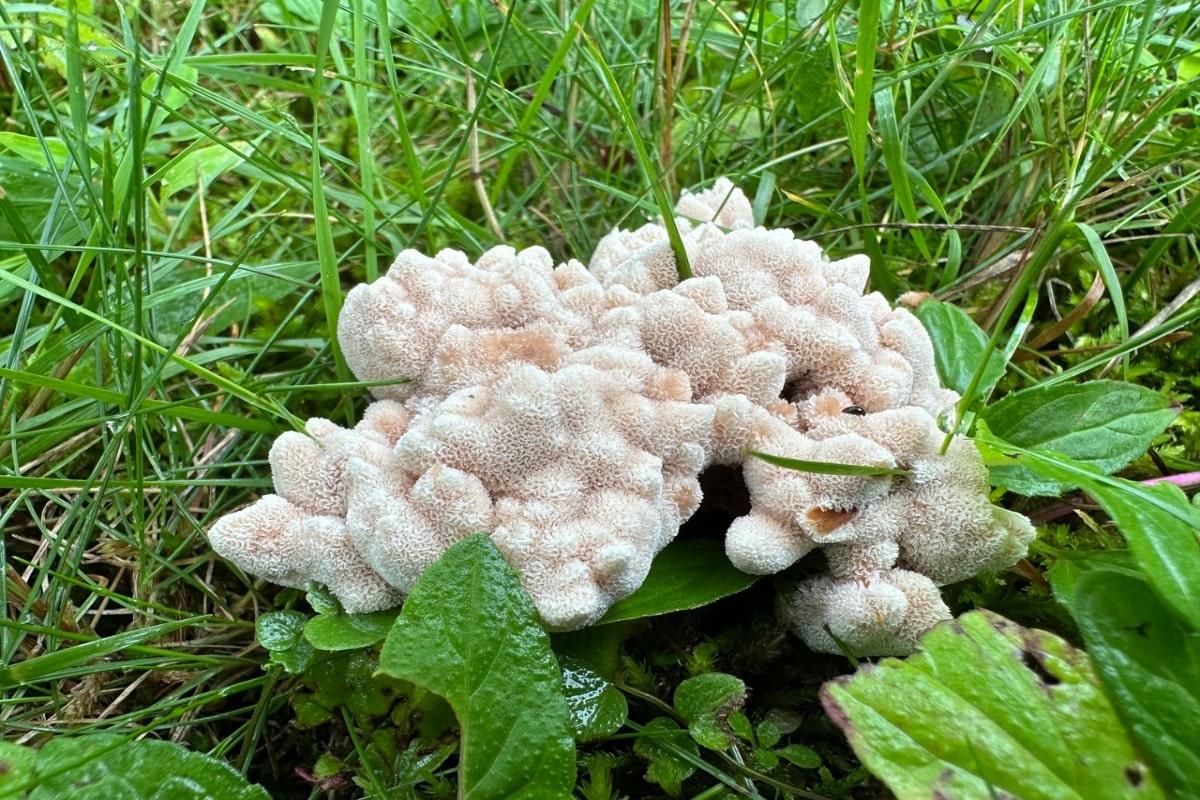
Abortiporus biennis by Lyla R. Meader on Mushroom Observer
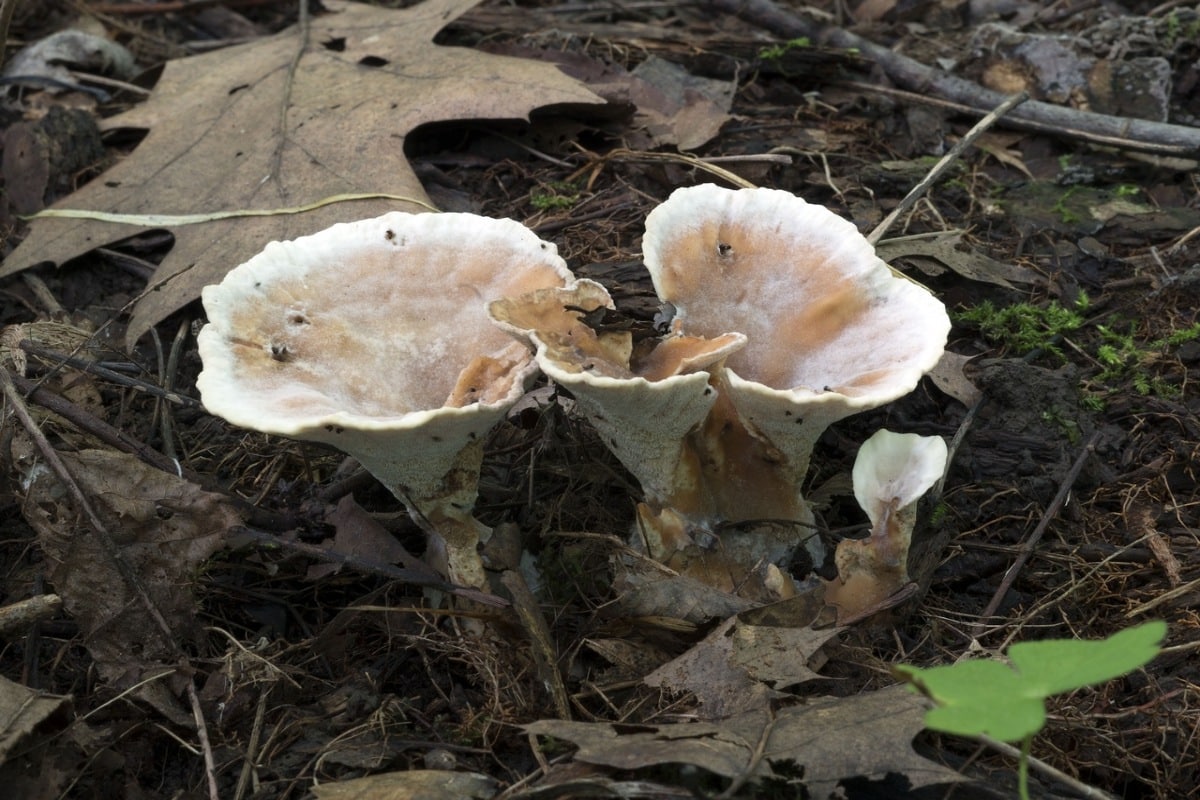
Jump to:
All About Blushing Rosette Mushroom
The blushing rosette is a medium-sized polypore fungus with unique evolution and transformation. Blushing rosettes comes in two distinct forms—a “normal” form that looks like a typical polypore with single or multiple caps merged into an overlapping rosette, and an “aborted” form that appears as an irregular mass of pore surface. Often, with the aborted form, it’s impossible to make out a cap or stem at all.
There are at least 55 different names for Abortiporus, including many species and genus names. This is likely because the two forms look very different and are hard to match up. Some of the previous names include Polyporus biennis, Boletus biennis, and Heteroporus biennis.
The blushing rosette belongs to the Meruliaceae family within the order Polyporales. Mycologist Christiaan Hendrik Persoon first described this species in 1801. The genus name Abortiporus comes from the Latin word “Abortus,” which means stopped growth (of an organism). “Porus” comes from ancient Greek and means a pore. The specific name biennis means it fruits every two years; however, the fruit bodies of this fungus grow every year. The biennis name is a misnomer.
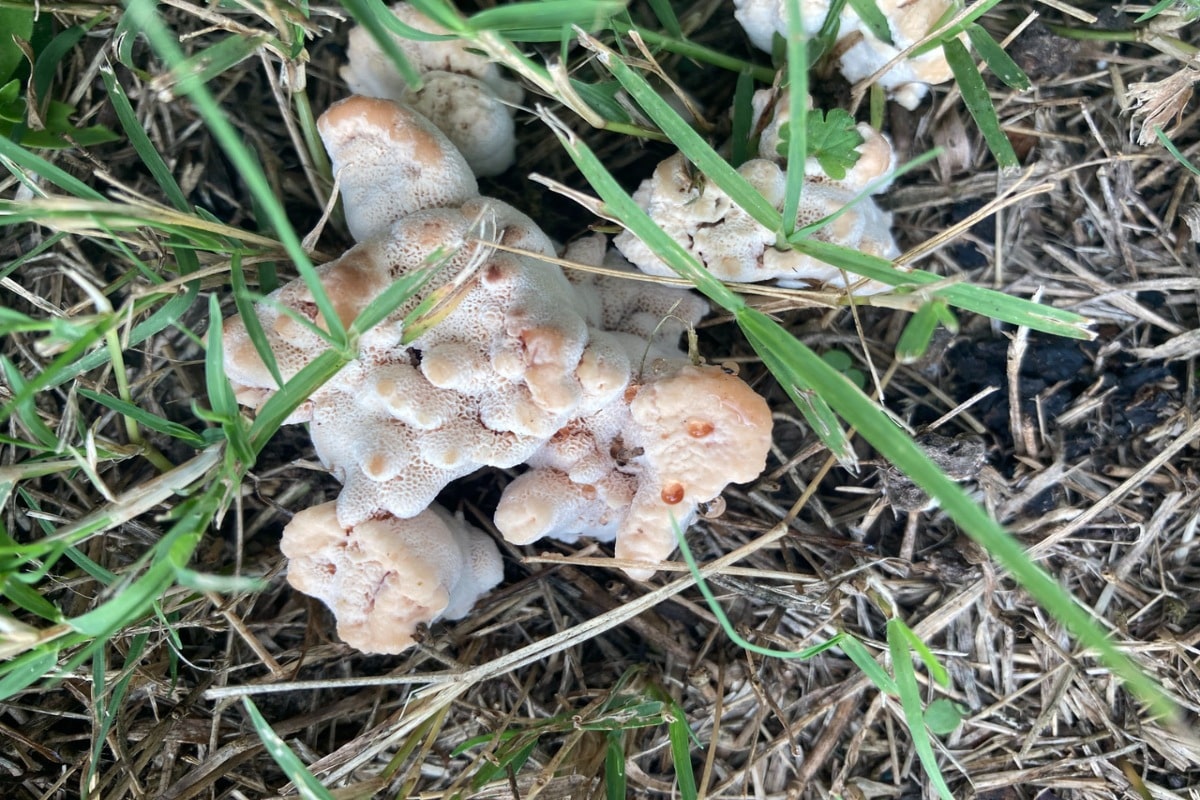
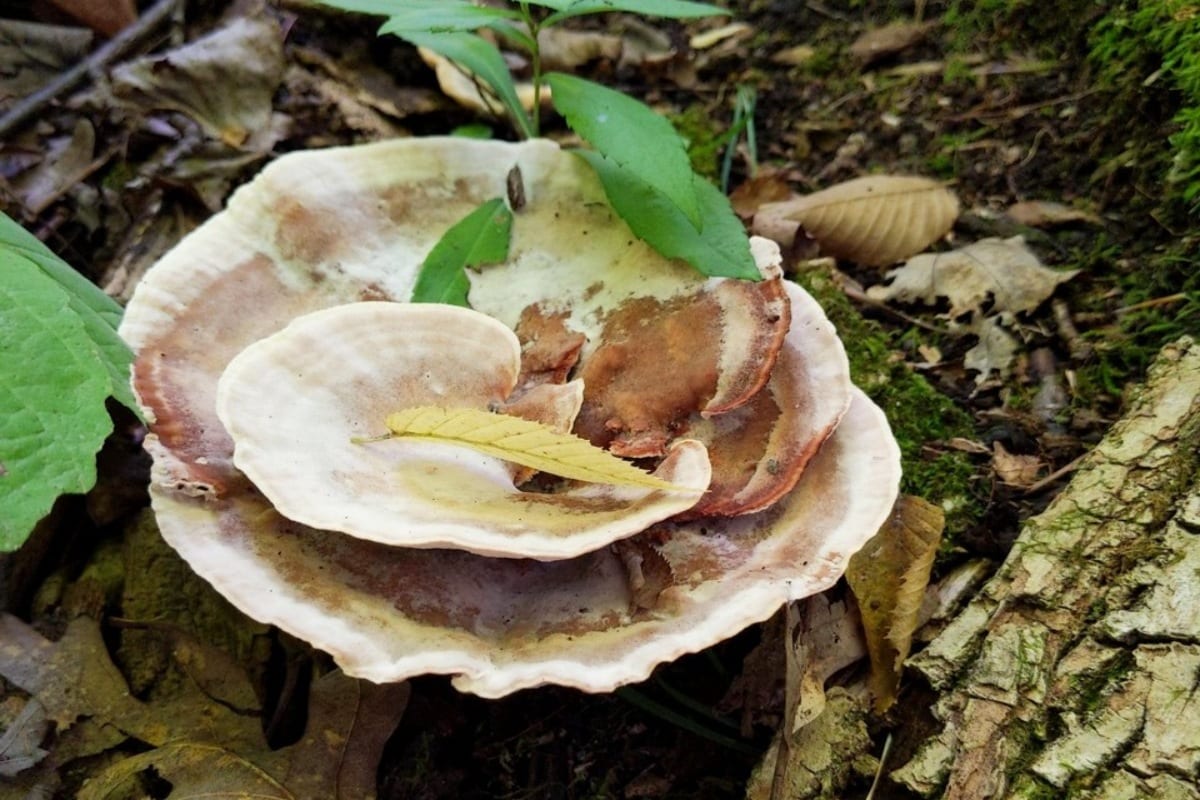
Blushing Rosette Mushroom Identification Guide
Season
The blushing rosette mushroom fruits in summer and fall. In milder climate regions, it may be around year-round.
Habitat
This mushroom loves hardwood trees, especially oak and elm. It is partial to deciduous species, though it does grow on conifers too. It is highly adaptable and will grow on living trees, decaying logs, and woodchip mulch in landscaped areas.
The blushing rosette usually fruits near the bases of stumps and living trees. It looks like it grows straight from the soil, but it actually fruits from buried roots or woody debris. This fungus creates white rot that breaks down wood. It grows alone or in small groups, and sometimes densely clustered.
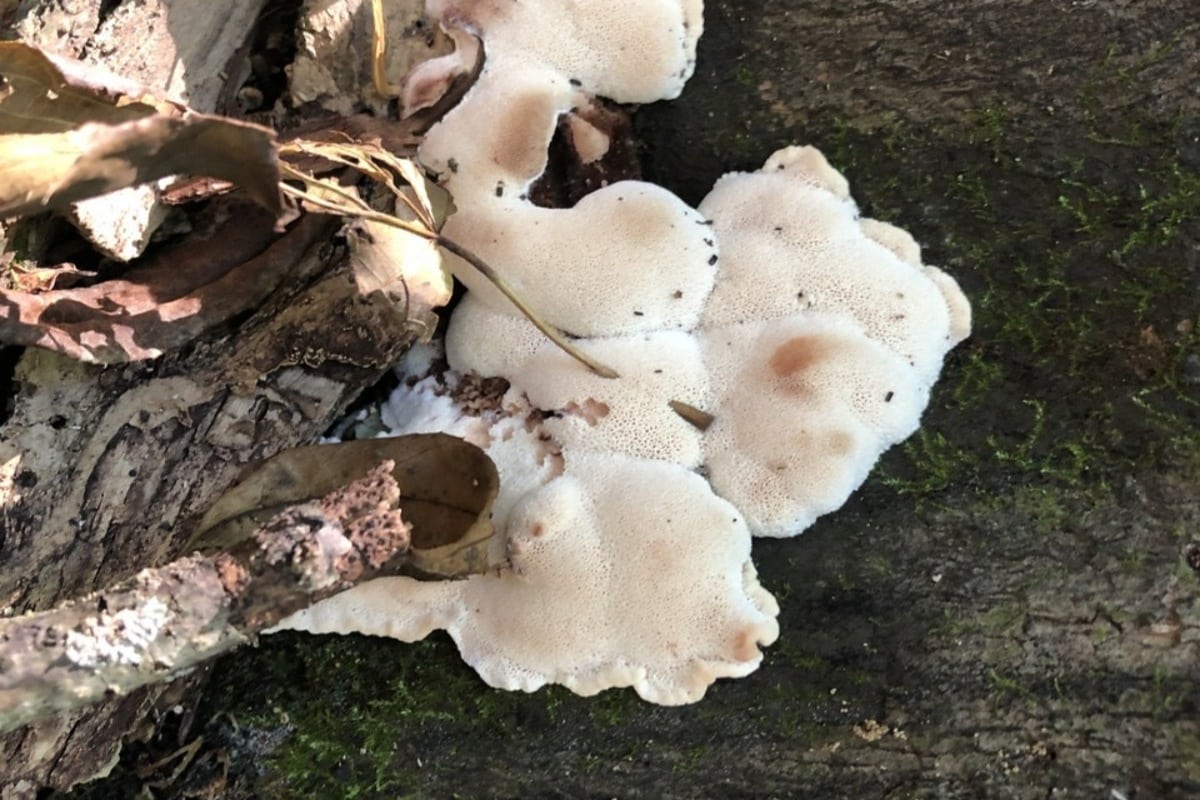
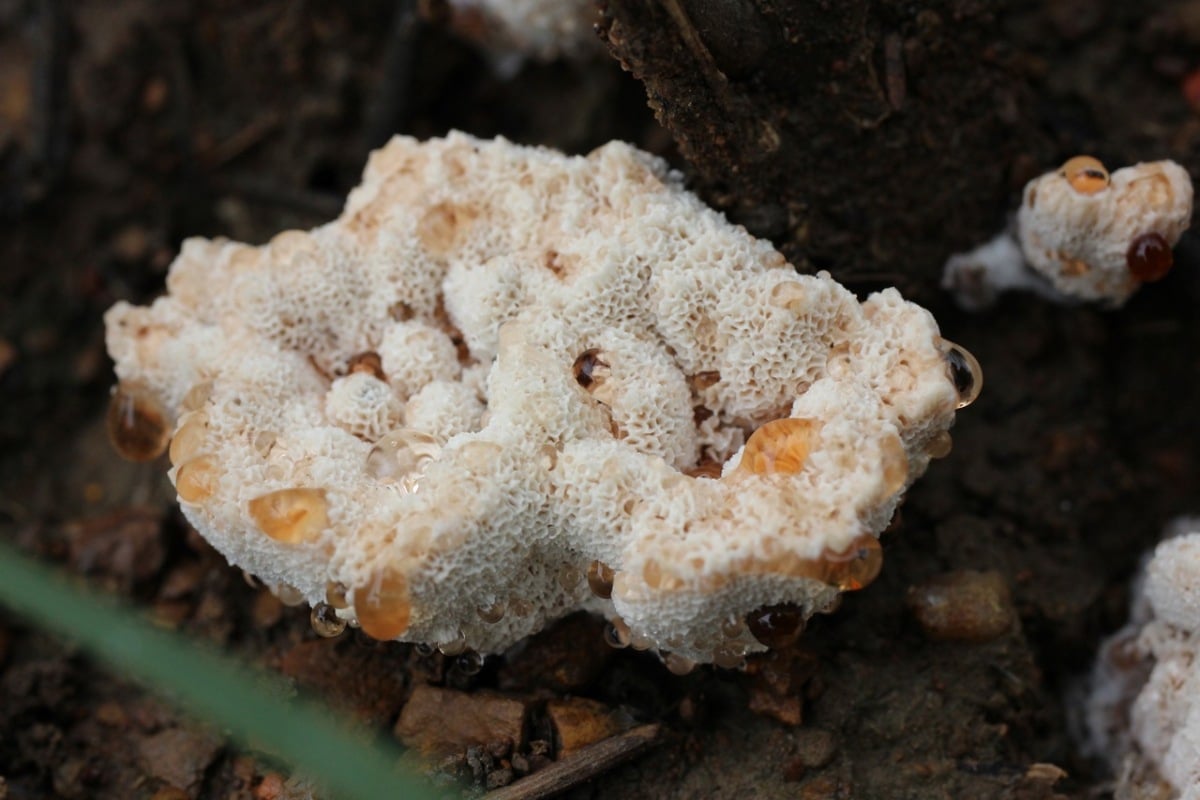
Identification
Regular Form
The cap of the blushing rosette starts flat and roundish, and it is white to ochre to brown-colored. The younger mushrooms are smooth or slightly hairy and are thinner at the edges than in the center. Like this, it looks very much like a normal polypore with a distinguishable cap and pore surface.
The blushing rosette cap becomes somewhat wrinkled or uneven with maturity. As it ages, it also changes from whitish to pinkish or reddish-brown. The cap coloring is actually quite variable.
The stem grows 1.5-3 inches long, is thick, and tapers at the bottom. It may not have a distinguishable stem, though, as that varies too between species. The mushroom has a deeply “rooting” base that goes into the wood substrate. When you see this mushroom, dig into the substrate a little to see that super long stem. The stem’s color matches the cap and changes color along with the cap as the mushroom ages.
The pores on the underside of the mushroom are white to cream-colored. They are small and roundish when young, but as the mushroom grows, the pores stretch out and look maze-like. Mature blushing rosettes might develop a slight pinkish or brownish tint in their pores. The pores will also stain reddish-brown when handled.
Young mushrooms can release reddish or orange droplets in wet conditions. This process, called guttation, makes the mushroom look like it is bleeding.
The unaborted blushing rosette often grows in overlapping brackets, which is where it gets the rosette name from. It may also grow individually or closely stacked. It is not uncommon to see more than one bracket emerging from a single stem base to create the overlapping or rosette pattern.
As the mushroom grows, it encompasses sticks and debris that are in its way, and these are commonly found embedded in the cap flesh. It does this in both the normal and aborted forms.
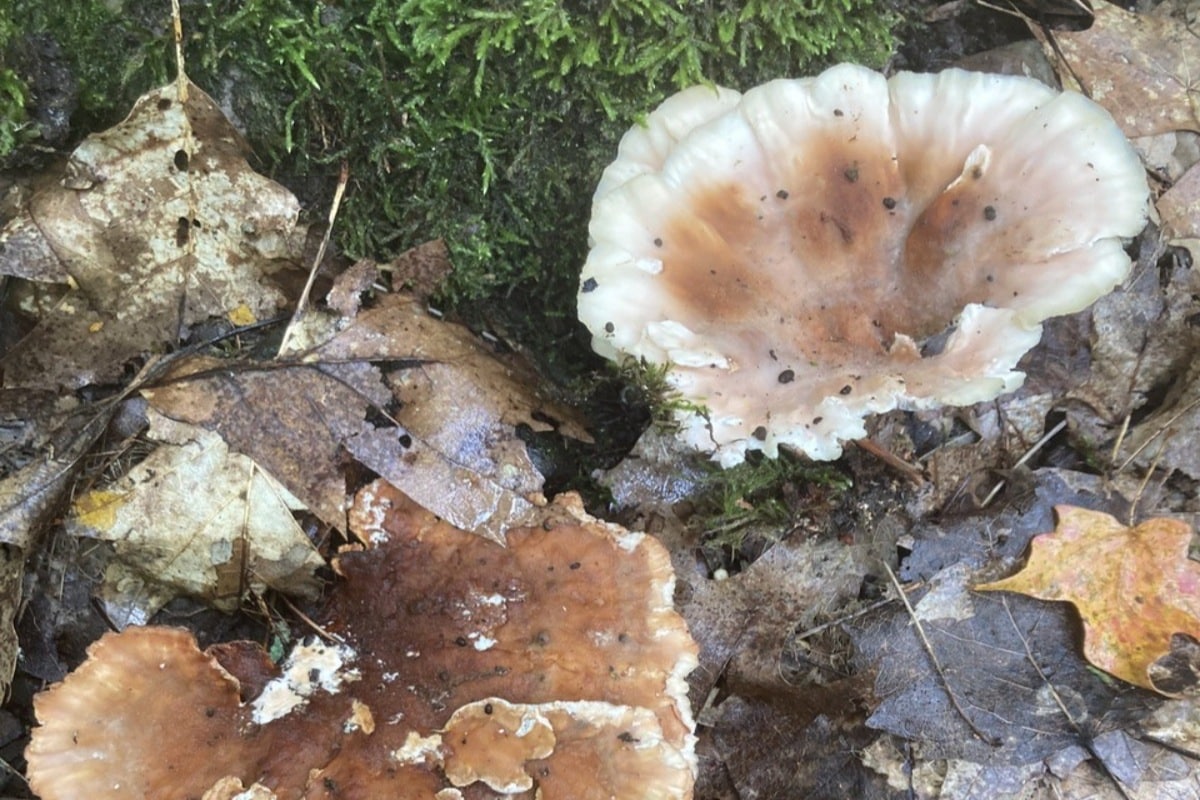
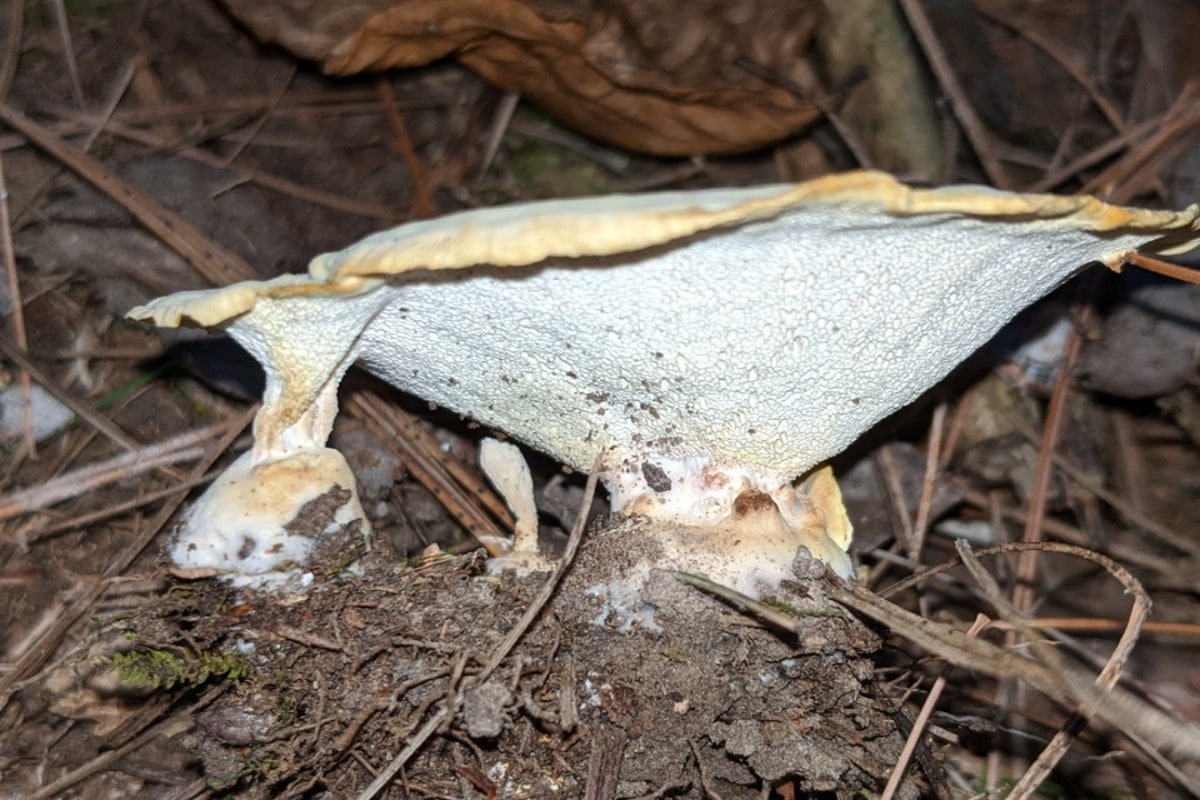
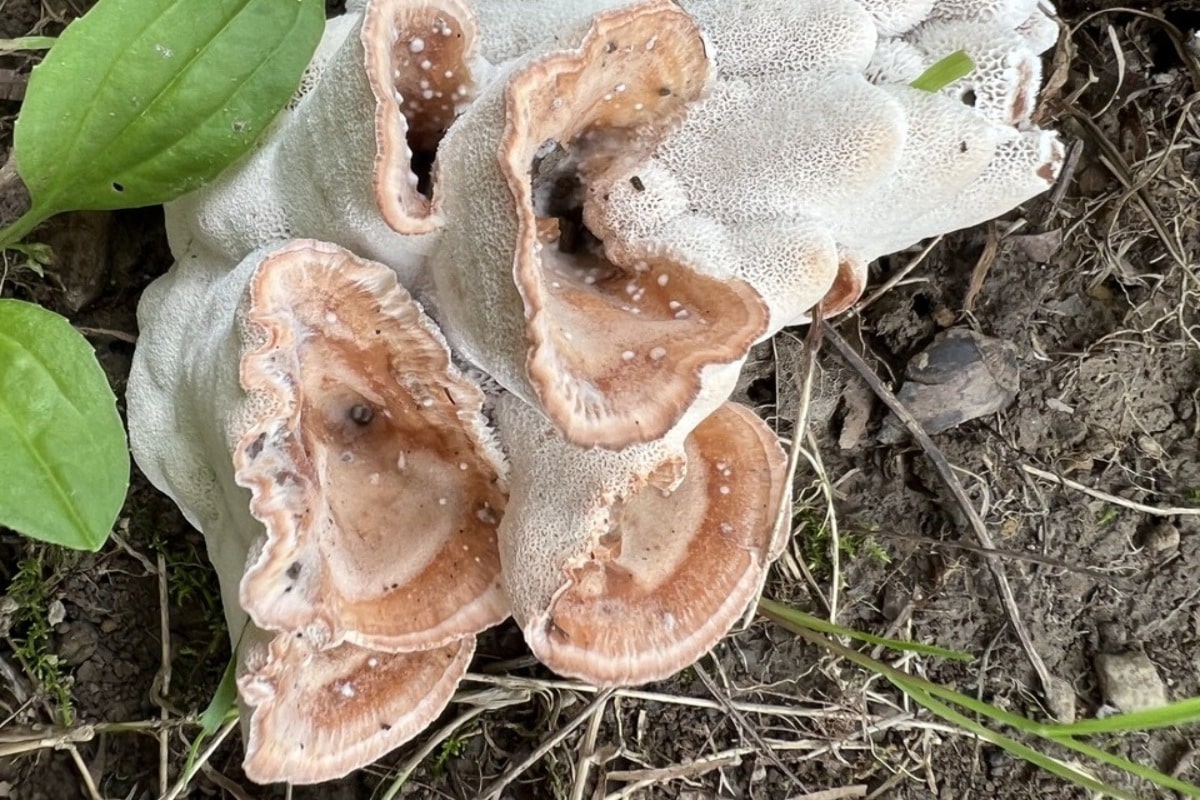
Aborted Form
Sometimes, this mushroom emerges as an irregularly lobed mass – the “aborted form”. This doesn’t always happen, though. The blushing rosette may grow “normal” and not abort at all. Or, it might start growing normal and then start going crazy. It is actually more common to see this mushroom in its aborted form than in its regular polypore shape. This may be a habit of the mushroom or just that people tend to notice it more when it’s aborted.
The reason for the aborted transformation might be because of drought, other severe weather situations, or some other type of stress the fungus is experiencing. There doesn’t seem to be a widespread consensus on why this happens, what precedes the aborting, and why it is so common.
If it does abort either when it emerges or later on, the entire appearance changes very dramatically. The mushroom turns its pore surface outwards, so the entire thing is essentially a spore surface without any hint of cap or pores like it had before. Or, it may be a combination of some caps sticking out of a layer of thick, white pores. It looks like someone laid a layer or clumps of white sponges across the top of the mushroom caps.
The mushroom may be rossette-shaped, with overlapping bracket-like growths partially covered in white spongy pores. Or, more commonly, you’ll find an irregular, hemispherical, or cauliflower-like mass that is very unmushroom-like. It might even look like a densely packed bouquet of white porous cups. At this stage, it’s hard to determine if it’s a fungus at all; it is so weird-looking. There is often no longer a discernable cap, stem, or regular pore surface.
The mass is generally around 2-8 inches wide, but this can vary a lot. You can see from the photographs how many different ways the mushroom might abort. Some specimens are more upright, while many look like they were splatted on the ground.
The growth habit of the aborted form is wild, irregular, and erratic. That’s just one of the reasons this mushroom has had so many names. It’s hard to imagine it can all be the same species when it can look so different. The big commonality is the very white, wide-open pores, reddish brackets (if there are any), appearance of red droplets, and general bizarre-ness overall.
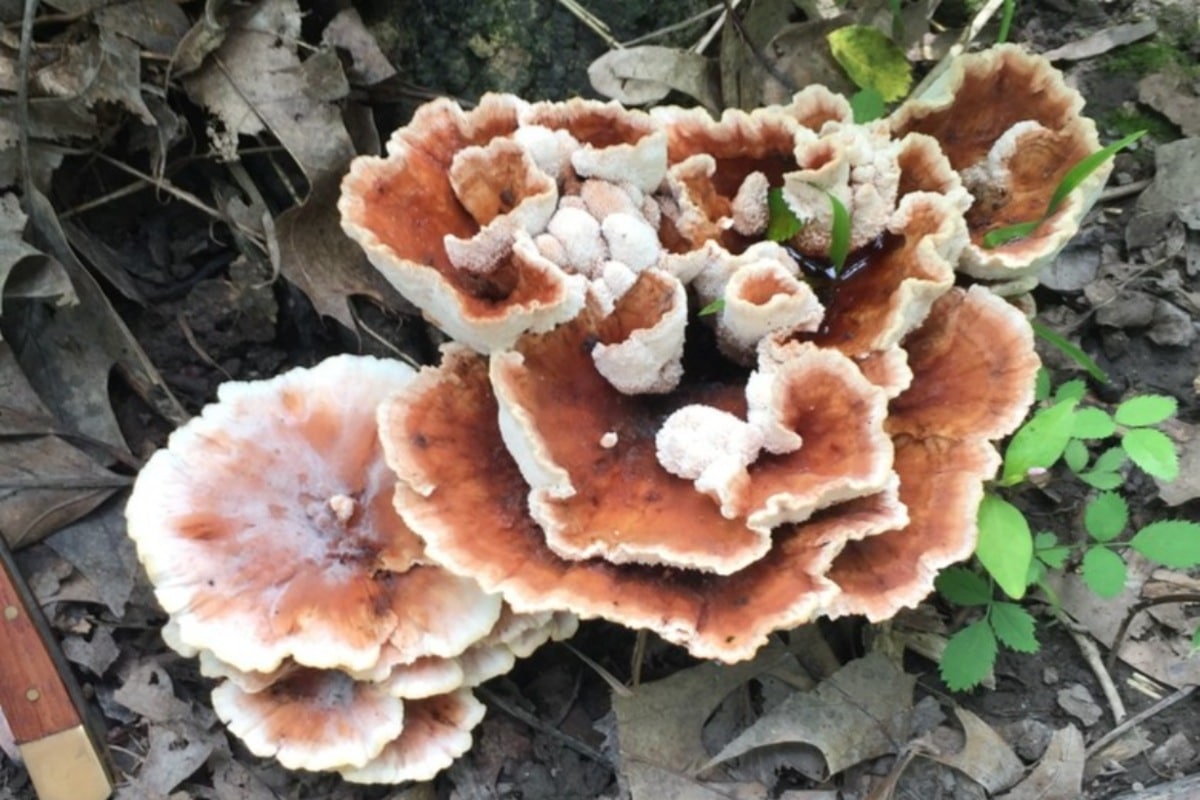
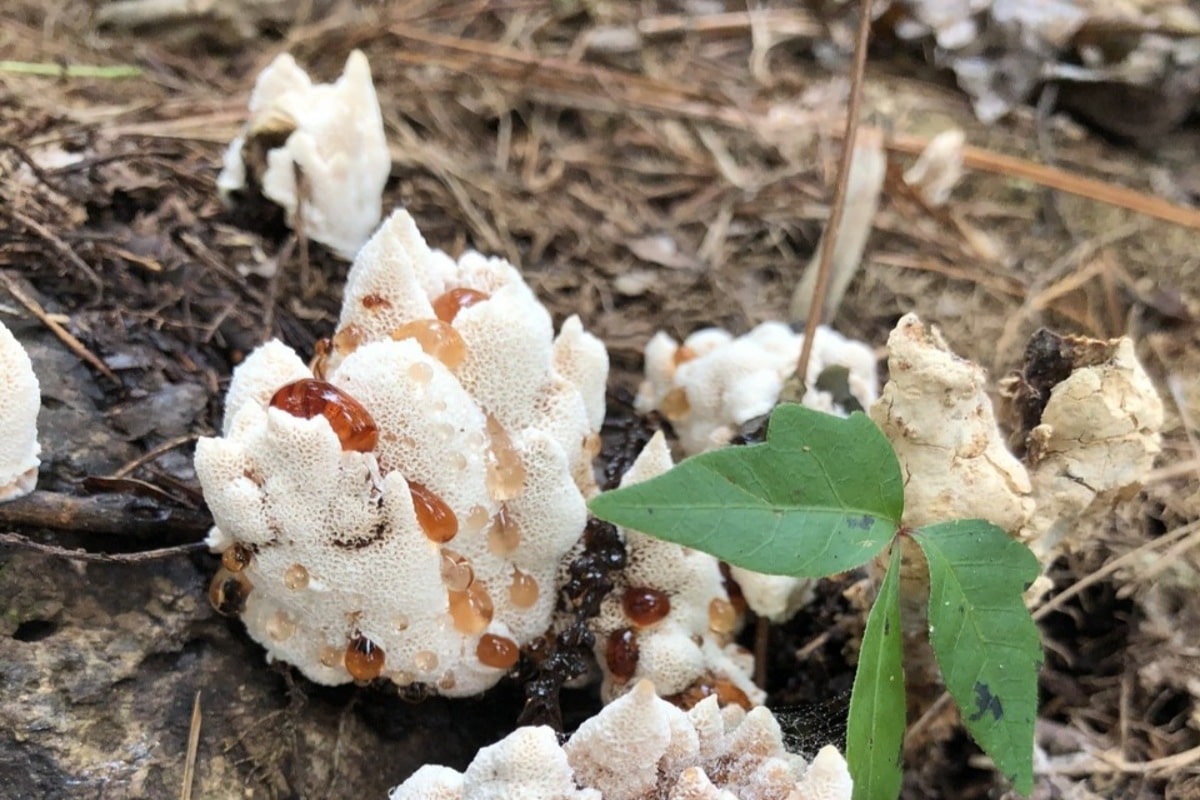
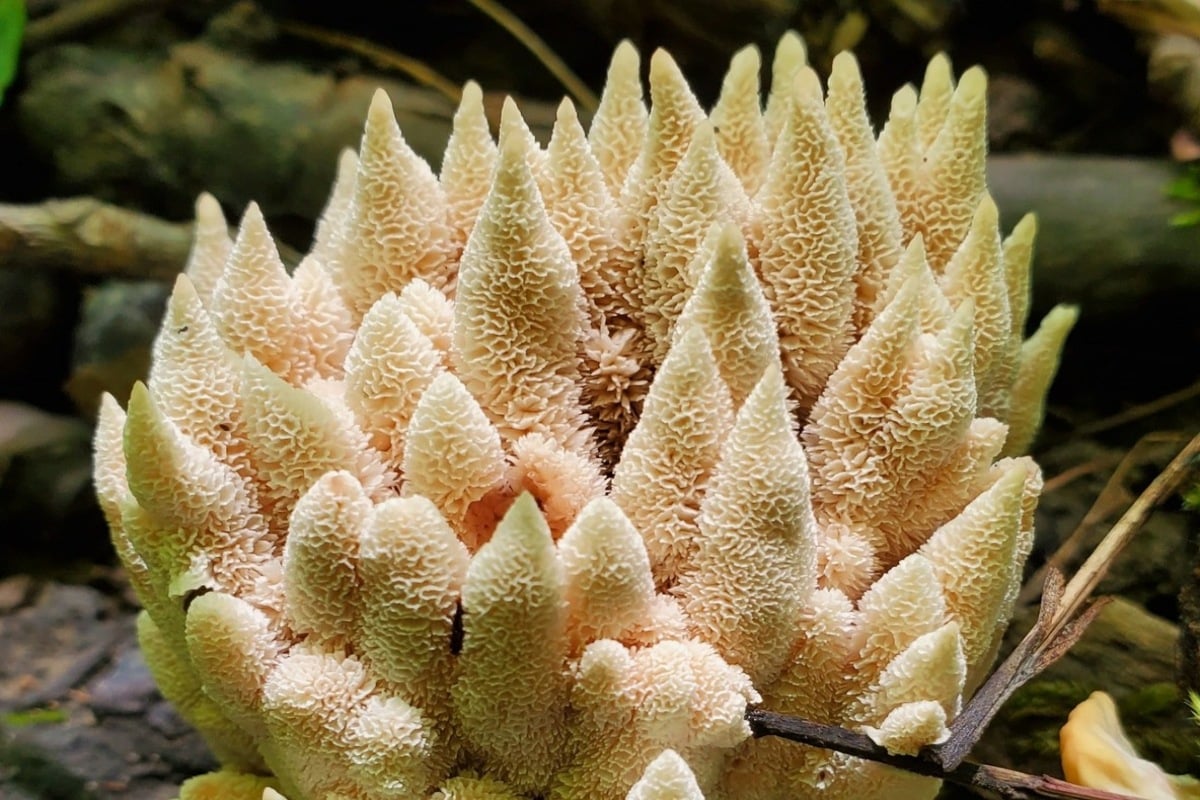
Taste and Smell
The blushing rosette has a mild smell that’s not distinctive and tastes slightly bitter.
Flesh and Staining
The flesh has two distinct layers. The top layer is soft and yellowish-brown, while the inner layer is harder and cream-colored. This “duplex” structure is a great way to confirm that you’ve found a blushing rosette mushroom.
When the mushroom is bruised, it may have a subtle reddish or pinkish staining, especially in younger specimens. This reaction is the reason for the “blushing” in its common name and helps identify the species.
Spore Print
The spore print is white.
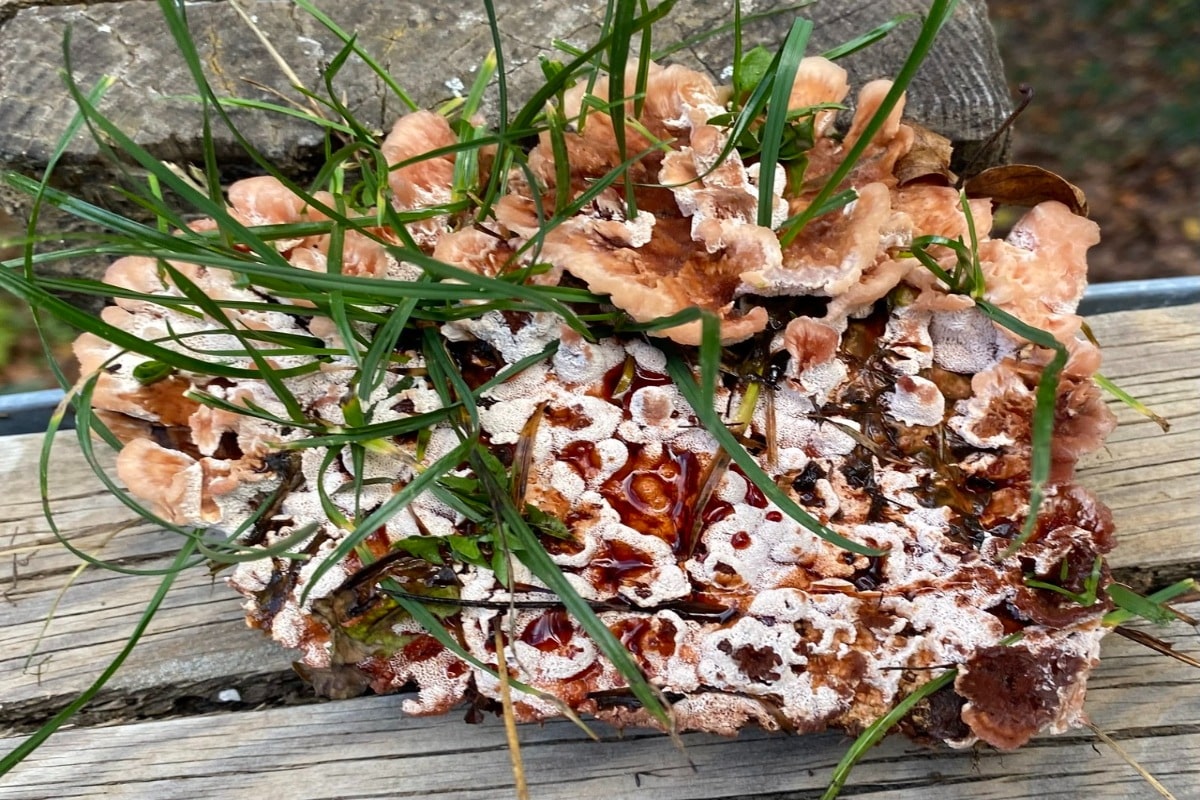
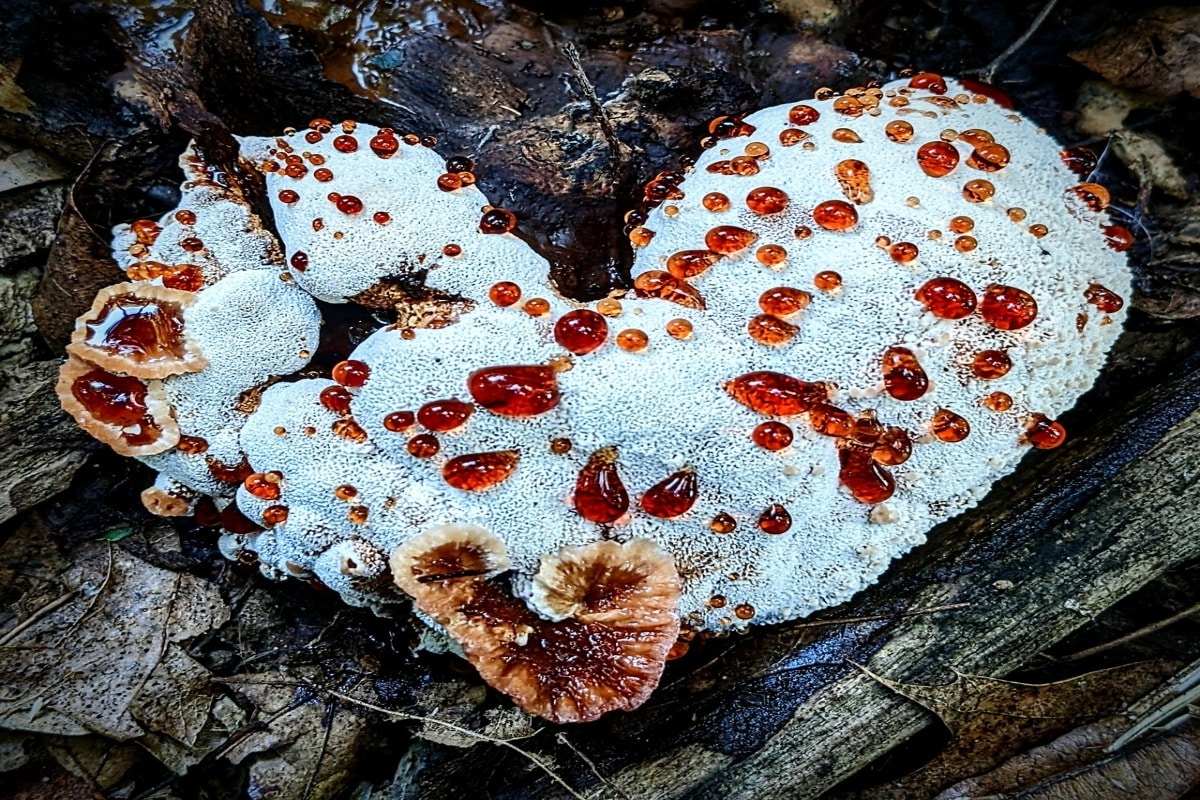
Blushing Rosette Mushroom Edibility
The blushing rosette is not toxic, but it’s also not edible. It has a mild taste and a strange texture that makes it unappealing.
Blushing Rosette Lookalikes
Hydnellum species
Young blushing rosette mushrooms often produce red droplets that look like those from Devil’s Tooth (Hydnellum peckii) and Mealy Tooth (Hydnellum ferrugineum). A quick look at their underside, though, quickly sets them apart. Hydnellum species have spines or teeth under their caps instead of pores. Hydnellum species also prefer to grow in old conifer forests near pine or spruce trees, while the blushing rosette prefers hardwoods. This habitat difference also helps confirm the identification.
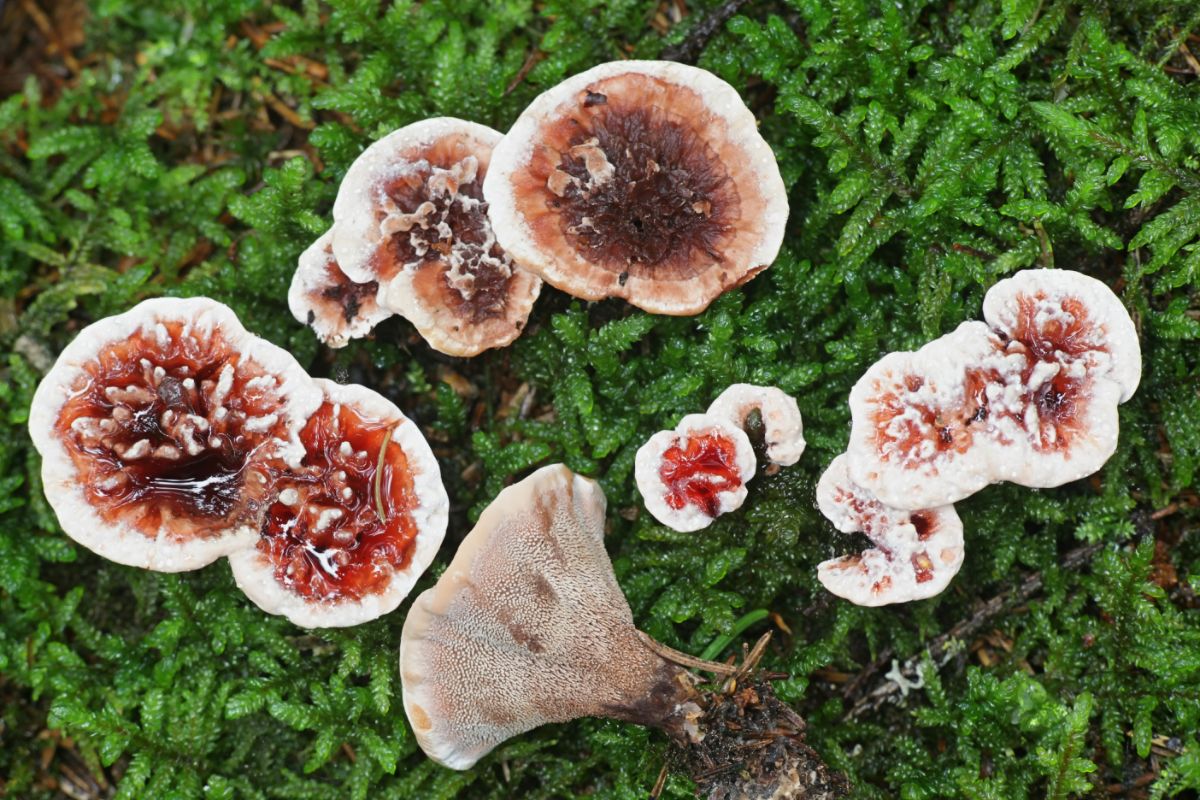
Sheep Polypore’s (Albatrellus ovinus)
The sheep’s polypore looks somewhat similar to the unaborted blushing rosette. It has a whitish or tannish cap with a white or creamy yellow pore. The pores of the sheep polypore remain small and round when the mushroom ages, though, which is different from the labyrinthine pattern seen in mature blushing rosettes. This species also grows with conifers, not hardwoods.
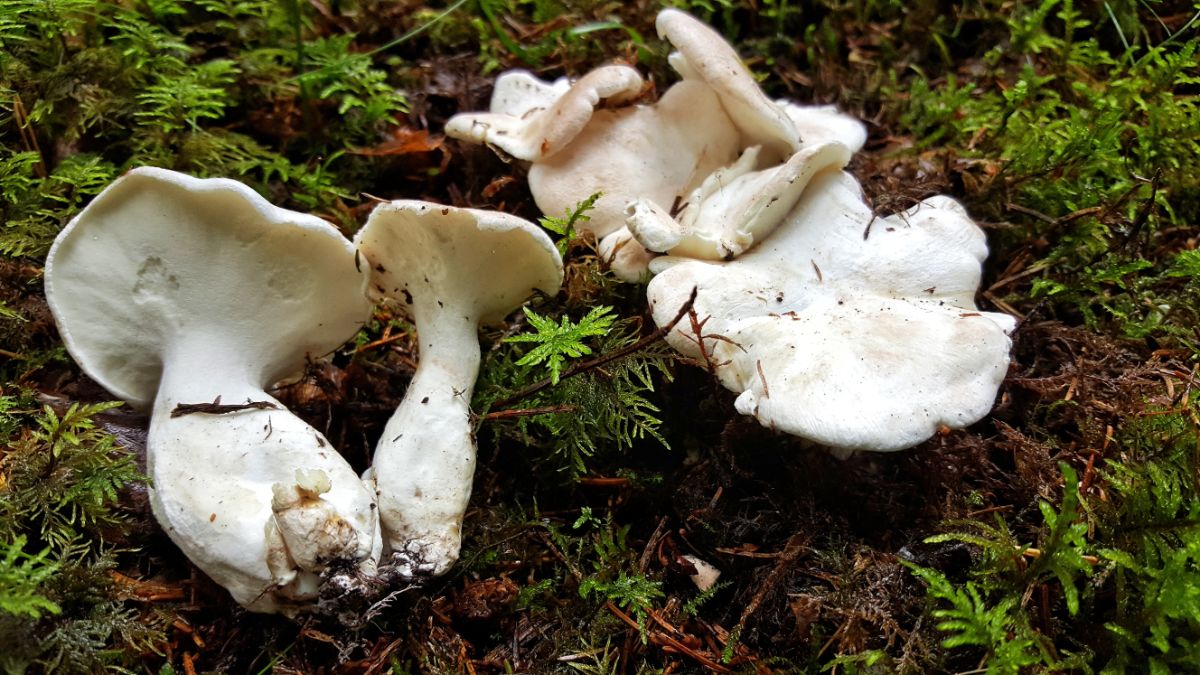
Common Questions About the Blushing Rosette Mushroom
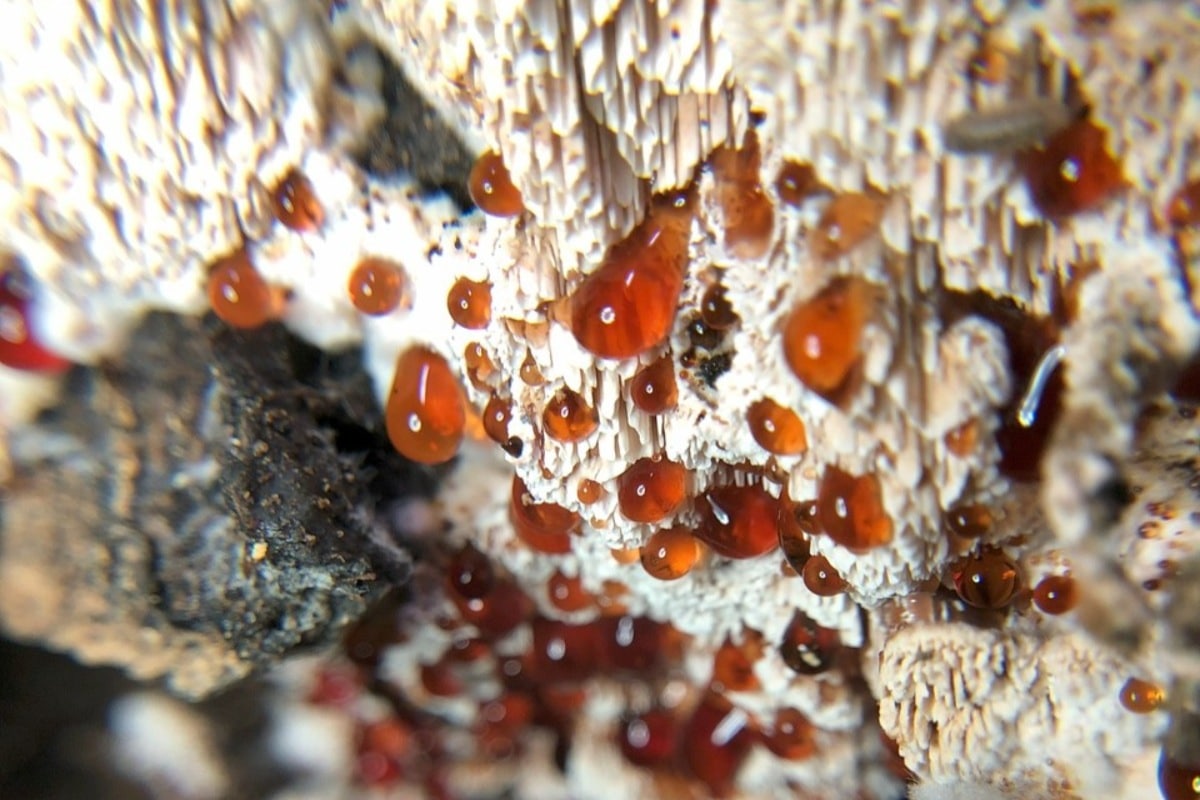
Where can I typically find Blushing Rosette mushrooms?
Blushing Rosette mushrooms grow on or near hardwood trees, particularly oak and elm. They prefer moist environments and are most often seen during the summer and fall months in North America.
Is the Blushing Rosette mushroom edible?
The Blushing Rosette mushroom is classified as inedible due to its bitter taste and unusual texture. It is not toxic or poisonous, though, it’s just not enjoyable to eat.
Is it safe to touch the Blushing Rosette mushroom?
Yes, it is safe to touch the Blushing Rosette mushroom with bare hands. Like most fungi, it must be eaten to cause any adverse effects.

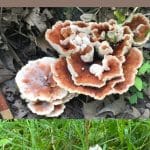
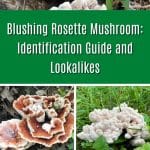
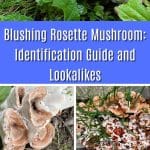
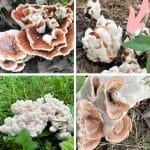
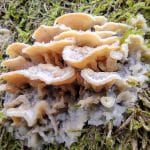
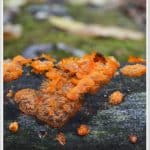
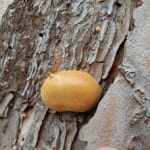
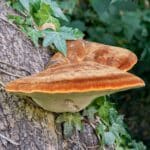
Leave a Reply